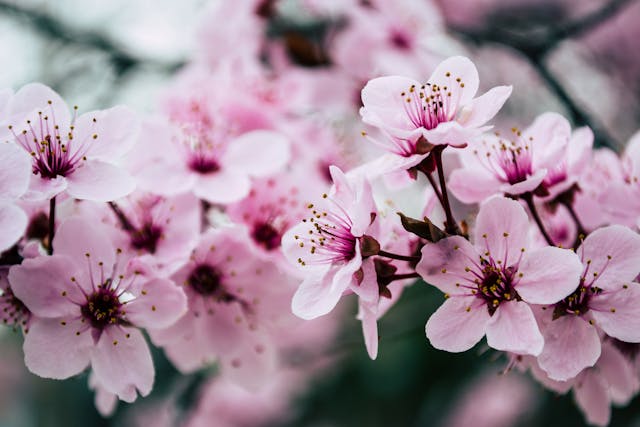
The Significance of Flowers in Asian Cultures
It's cherry blossom season in New York, which has given us flower fever! And has gotten us thinking about the significance of different buds in various Asian cultures. Here are just a few:
Cherry blossoms
Called sakura in Japanese, cherry blossoms are full of meaning in Japanese culture. While they symbolize rebirth and renewal, they're also a reminder that life is short. The blossoms themselves last only two weeks before they start to fall.
Check out some sakura items.
Peach blossoms
In Chinese culture peach blossoms represent a carefree life. In Vietnamese culture they’re believed to attract prosperity and happiness, and are therefore imperative during Tet or Vietnamese Lunar New Year.
Peonies
The peony is known as the “king of the flowers” in Chinese culture. Emblematic of riches and honor, it was selected in 2019 by the China Flower Association as Mainland China's national flower.
The peony is also popular motif in Japanese ukiyo-ke, woodblock prints depicting scenes from "the floating world" or pleasurable life, including beautiful women, kabuki actors, and folk tales. By extension the peony is also a popular Japanese-style tattoo choice.
Check out some peony items.
Plum blossoms
In Chinese culture plum blossoms are one of four "Flowers of the Seasons," along with the orchid (spring), lotus (summer), and chrysanthemum (fall). The plum blossom stands for, you guessed it, winter. Because they bloom in cold weather, they embody perseverance and resilience. They're also the national flower of Taiwan.
In Chinese folk culture the plum blossom's five petals stand for the five blessings: fu (福 good luck), lu (禄 fortune), shou (寿 longevity), xi (喜 joy) and cai (财 wealth).
Orchids
Elegant and delicately fragrant, the orchid was often associated with female beauty in Chinese culture. Back in the day, Lan, Mandarin for "orchid," was a popular girls' name.
Orchids can talk too, at least in Peking opera. In "orchid-speak" each of the five fingers on a performer's hand refers to the five petals of the orchid. Different gestures convey messages ("Come over" and "Let me think") and emotions like sadness and delight.
Check out some orchid items.
Lotus
This flower of summer represents peace, purity, and enlightenment. Regarded as auspicious by feng shui masters, the lotus is said to turn bad luck to good and to heighten one's sense of joy and peace.
In Buddhism, the lotus is associated with spiritual awakening and faithfulness. The flower is considered pure due to its ability to emerge perfectly clean from murky waters. It also symbolizes purity of speech, the body, and the mind.
Check out some lotus items.
Chrysanthemums
This floral exemplar of autumn takes center stage during the Double Ninth Festival. Occurring on the ninth day of the ninth lunar month (which often falls in October), the Double Ninth Festival involves climbing mountains, eating chongyang cakes, drinking chrysanthemum wine, and wearing the flower in one's hair.
The chrysanthemum is also known as the "Hermit of All Flowers." This is because of its association with Tao Yuanming, a well-known fourth-century "recluse poet." Tao was content spending his solitary days writing poetry, drinking wine, and cultivating chrysanthemums, which became inexorably linked to his life and work.
In addition, the flower symbolizes longevity since the Chinese word for chrysanthemum, ju, sounds like the one for "enduring." It's also believed to have health benefits. Chrysanthemum tea is thought to help reduce inflammation and blood pressure, and to relieve cold and hangover symptoms.
Check out some chrysanthemum items.